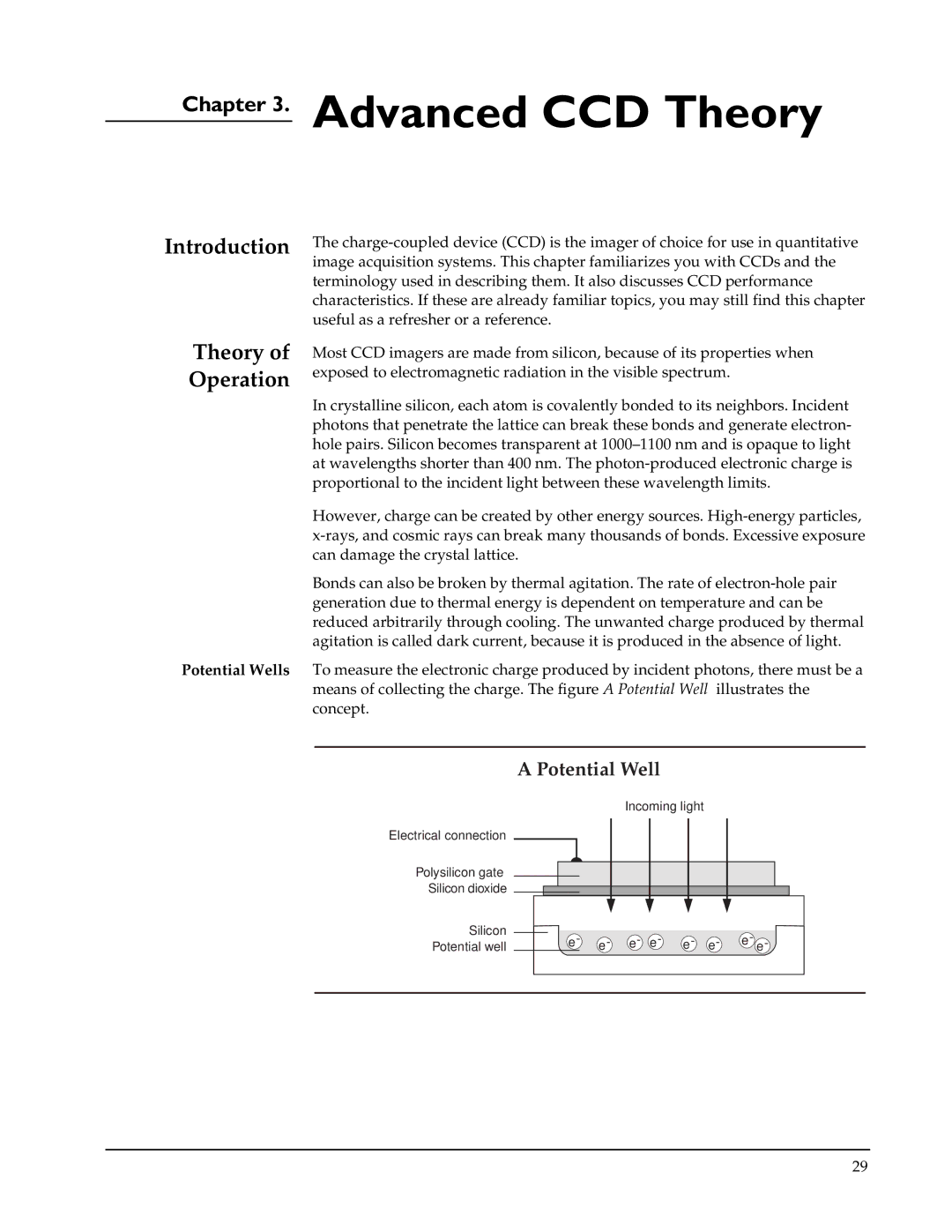
Chapter 3.
Introduction
Theory of Operation
Potential Wells
Advanced CCD Theory
The
Most CCD imagers are made from silicon, because of its properties when exposed to electromagnetic radiation in the visible spectrum.
In crystalline silicon, each atom is covalently bonded to its neighbors. Incident photons that penetrate the lattice can break these bonds and generate electron- hole pairs. Silicon becomes transparent at
However, charge can be created by other energy sources.
Bonds can also be broken by thermal agitation. The rate of
To measure the electronic charge produced by incident photons, there must be a means of collecting the charge. The figure A Potential Well illustrates the concept.
A Potential Well
Electrical connection
Polysilicon gate Silicon dioxide
Silicon
Potential well
Incoming light
e- | e- | e- e- | e- | e- | e- e- |
29
